Here's What the Shape of a Wine Bottle Is Telling You
If you can't read wine labels (yet), start with the shape of the bottle.
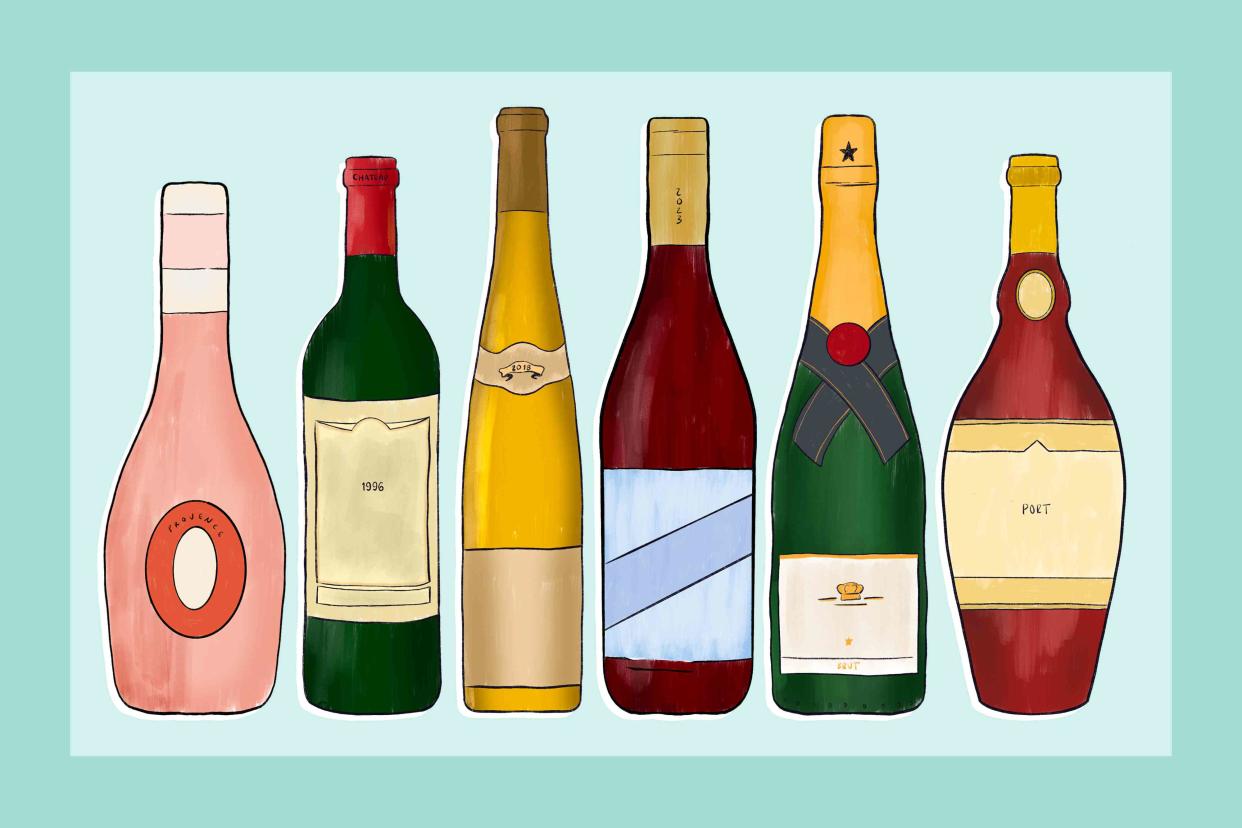
Sabrina Tan / Food & Wine
The shape, color, size, and weight of a wine bottle are typically unrelated to the quality of what’s inside, but these variables can give you important clues about what you’re about to drink.
“Bottle shapes can share details about a style and the cultural norms of a region, but sometimes the bottle choice is driven by logistical needs, packaging costs, and other less romantic factors,” says Jonathan Ross, wine director at The Global Ambassador in Phoenix, Arizona and The Twelve Thirty Club in Nashville, Tennessee. “The bottle can’t tell us anything more about what’s inside that can't be more easily found on a label.”
Jun Xi Chen, head sommelier at Jōji in New York City, says that previously, only certain, more highly regarded producers had the budget to buy thicker glass, and heavier bottles were considered a potential indicator of the quality of the wine inside. “Now, with more eco-conscious producers, many people are switching to thinner glass to reduce the environmental impact of shipping the wine,” he says.
Six common wine bottle shapes, explained
There are slight variations beyond the general categories below, but most wines you’ll find on store shelves will come in one of the following six shapes. The names tip a cap to the region where each style originated.
“Because there are only a few main bottle shapes, producers and regions often come up with their own way to ‘brand’ each bottle shape as their own, whether it’s through glass color, punt, depth, or height,” says Danya Degen, general manager and sommelier at Méli in Washington, D.C.
Alsace
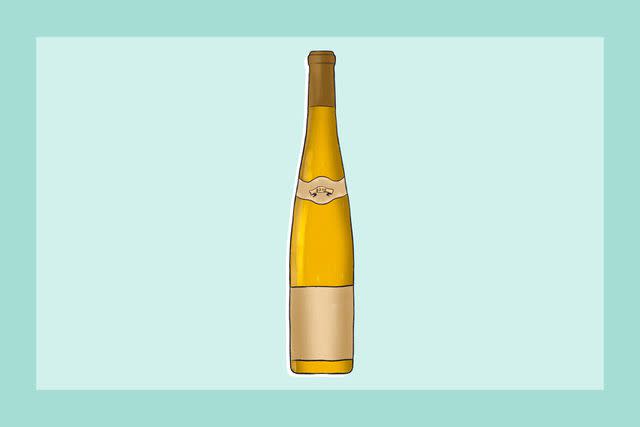
Sabrina Tan / Food & Wine
Common styles of wine:Riesling, Grüner Veltliner, Pinot Blanc, Pinot Gris, Gewürztraminer, Sylvaner, Albariño
These long, tapered, and thin bottles with sloped shoulders (the area between the bottle and the neck) are usually filled with Germanic, Austrian, or Alsatian grape varieties. “In the past, a longer neck sometimes indicated a higher quality level, but that's pretty old-school, and less commonly seen now,” says Luke Bolland, wine director at Point Seven, The Press Club Grill, and Coral Omakase in New York City. More recently, some Portuguese producers have adapted this bottle and stretched it taller, and is sometimes used to hold Albariño, explains Degen.
Bordeaux
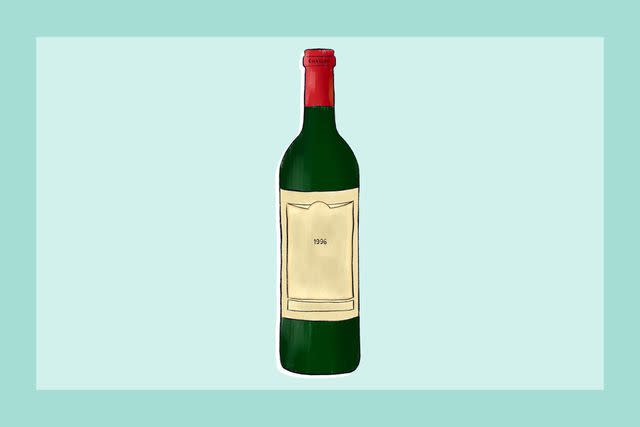
Sabrina Tan / Food & Wine
Common styles of wine: Cabernet Franc, Cabernet Sauvignon, Malbec, Merlot, red blends
You’ll recognize this ubiquitous bottle shape when you see the straight sides and high shoulders. While it was named after the French wine region famed for Cabernet Sauvignon, Merlot, and blends made with those grapes, Degen says that nowadays, this bottle shape is used all over, and has little association with any specific wine type or region.
Burgundy
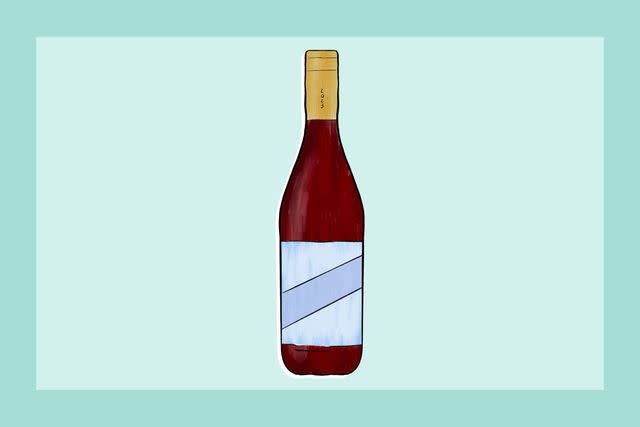
Sabrina Tan / Food & Wine
Common styles of wine:Chardonnay, Sauvignon Blanc, Pinot Noir, Chenin Blanc, Sancerre
Named for another French wine region, Burgundy bottles have a longer neck and more sloped shoulders than their cousins from Bordeaux.
Champagne
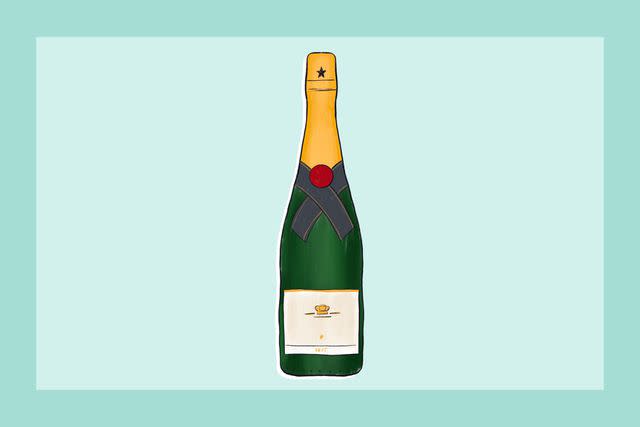
Sabrina Tan / Food & Wine
Common styles of wine: Sparkling wine including Champagne, Cava, and Prosecco
“Unlike the other shapes, the Champagne bottle’s form serves a functional purpose,” says Joe Quinn, wine director for Aventino in Bethesda, Maryland and The Red Hen in Washington D.C. This modified Burgundy bottle is heavier to withstand the sparkling wine’s pressure, and also tends to have a deeper punt — the rounded indentation in the bottom of the wine bottle — to strengthen the glass.
Port
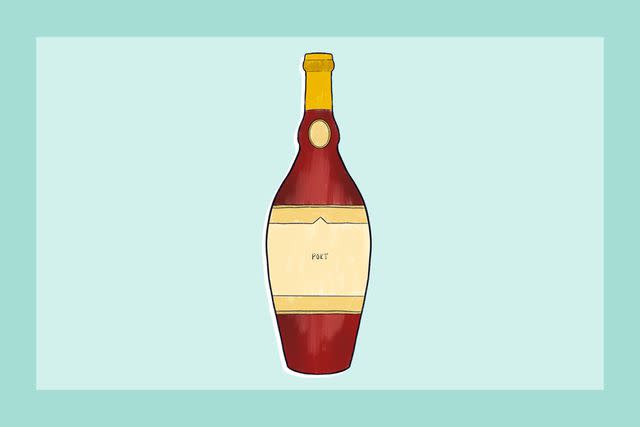
Sabrina Tan / Food & Wine
Common styles of wine: Fortified wines including Port, Madeira, and Sherry
This shape is similar to a Bordeaux bottle, just a bit more stout with a small bulb in the neck to collect sediment as you pour — no decanting required.
Provence
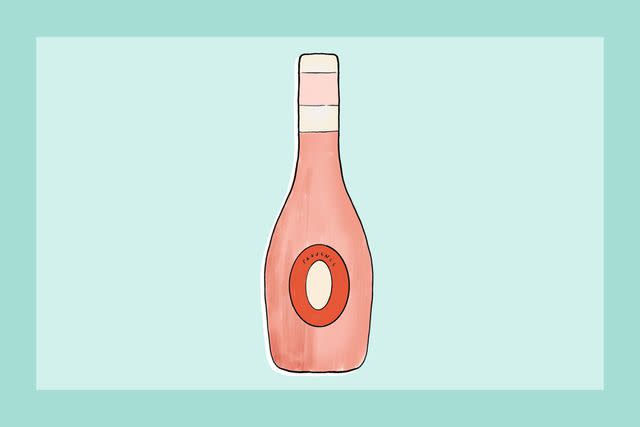
Sabrina Tan / Food & Wine
Common styles of wine: Rosé
Picture a bowling pin or hourglass, and you’ll be fairly close to the shape of this bottle style. The name pays tribute to a prominent rosé region, Côtes de Provence, although this shape is now used to hold rosés from around the world.
Why does the color of the glass matter?
Wine is sensitive to temperature and light, so if winemakers want to offer a potentially age-worthy wine, they often opt for green, brown, or more opaque shades of glass. Clear glass is a popular choice for wines that are best consumed between one to three years after bottling.
There’s a particular wine flaw referred to as "lightstruck wine," says Bolland, in which a wine has been overexposed to light through clear glass.
“This destroys aromatic compounds and creates really ‘off’ aromas that kind of smell like very old vase water...so, if you buy a clear glass bottle that has an orange-tinted film around it, leave it on! It's there for a reason, not just aesthetics,” he says.
For more Food & Wine news, make sure to sign up for our newsletter!
Read the original article on Food & Wine.






